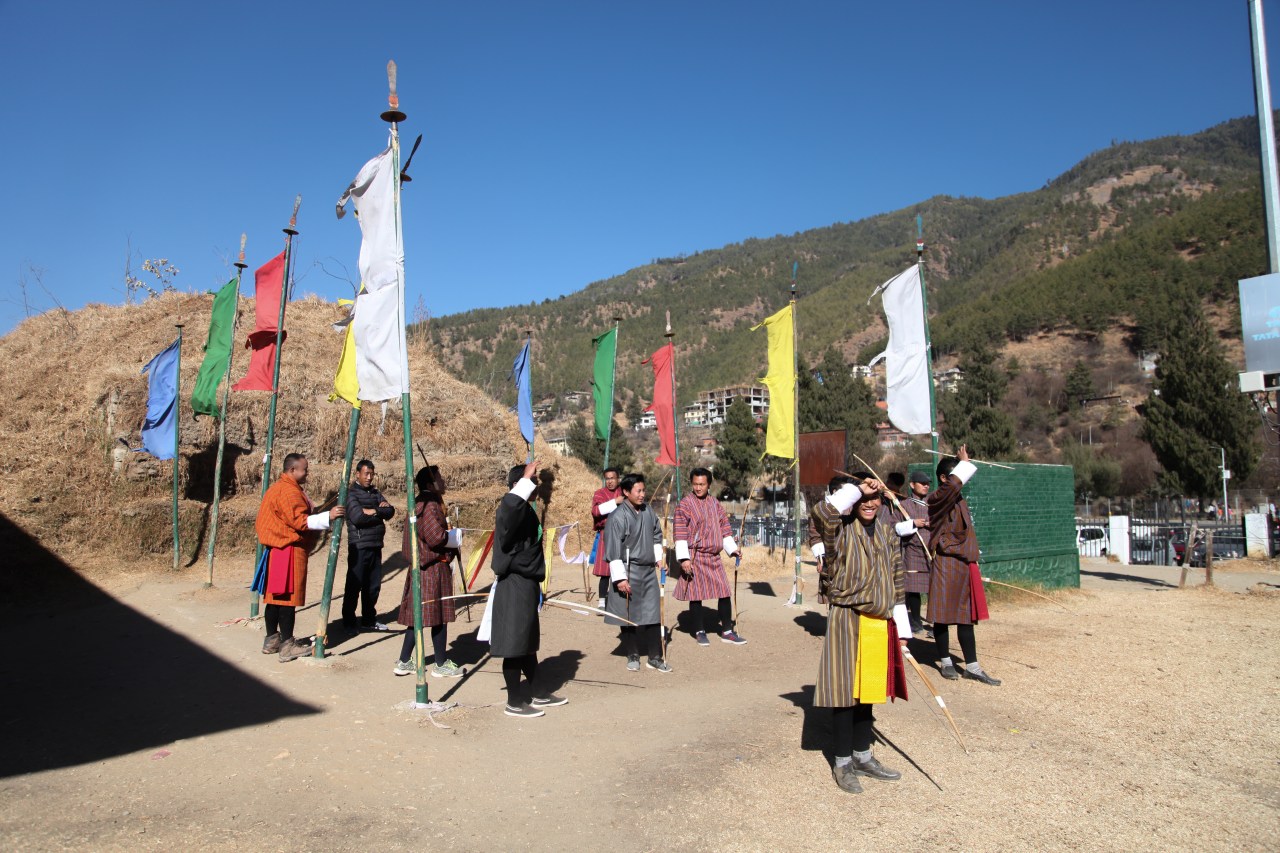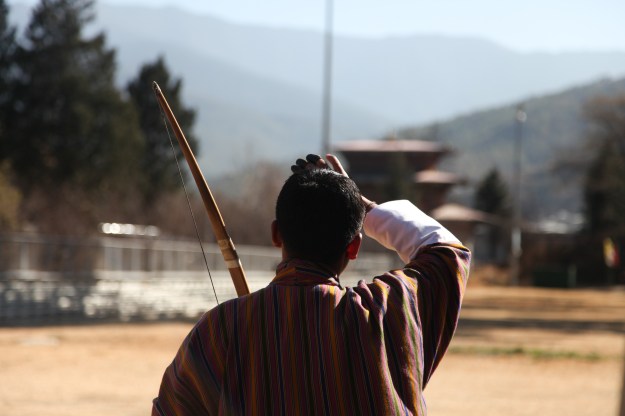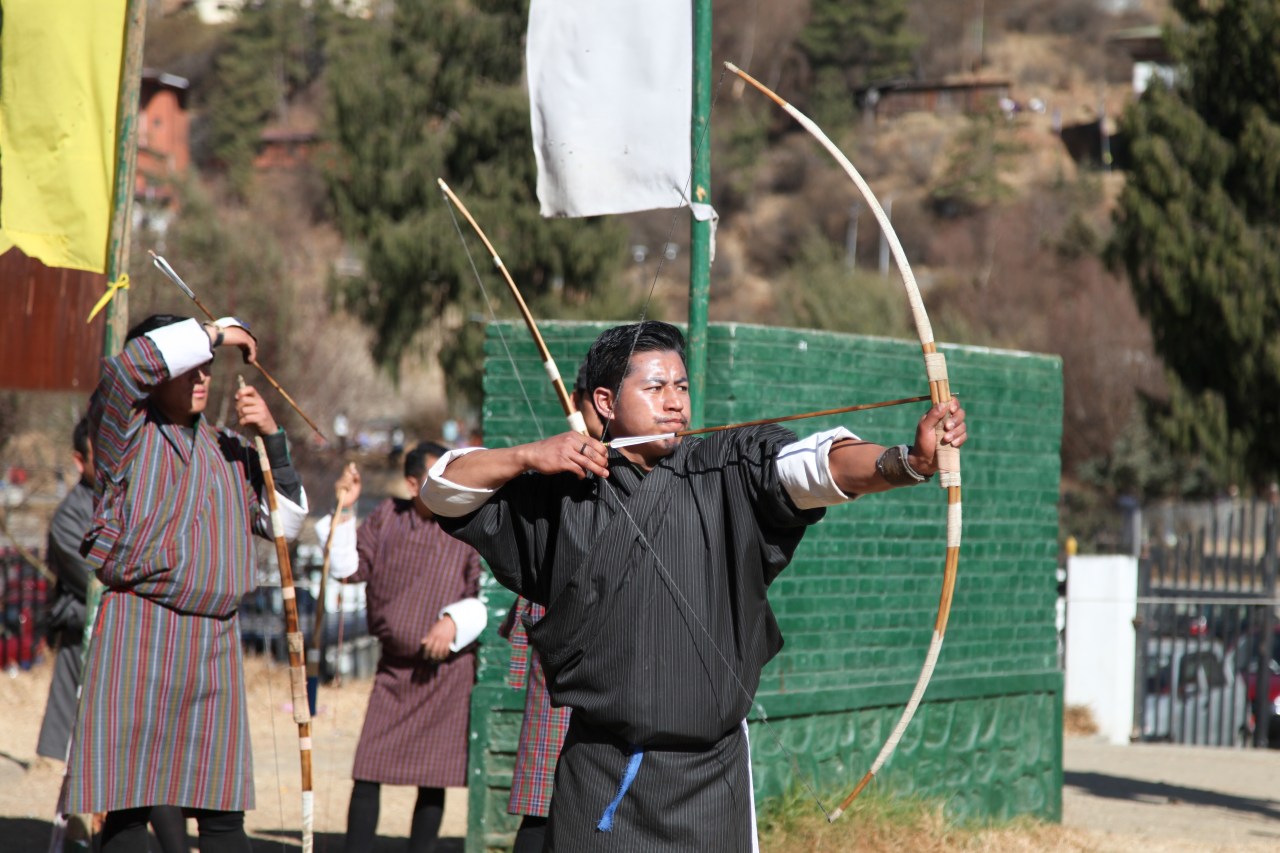It’s a warm, clear January day in Thimphu, the capital of Bhutan. Locals are relaxing and celebrating the Traditional Day of Offering, a national holiday that kicks off the farming season. Kids play soccer in Clock Tower Square, and families stroll by the river as birds wheel lazily overhead.
Meanwhile, a slightly rowdier scene is underway at nearby Changlimithang Stadium.
A small crowd has gathered to watch two teams of 13 men adorned in traditional gho—belted, patterned robes with distinctive white-cuffed sleeves—shoot massive bows a distance longer than a soccer field.
Archery is Bhutan’s national sport, and until 2012, the country’s only Olympic athletes were archers. But traditional Bhutanese archery bears little resemblance to what you might see at the Olympics.
In Bhutan, the bows are made of bamboo. (Olympic bows are typically made of fiberglass.) The target is roughly 4 feet tall and 1 foot wide—and sits a whopping 145 meters (475 feet) from the archer. That’s nearly twice the distance to an Olympic target. By comparison, Olympic archery seems positively cute.
If the arrow lands within one arrow’s distance of the target, the team is awarded a point. A direct hit garners two points, and a bull’s-eye three. Twenty-five points wins the game, and tournaments are decided by the best out of three.
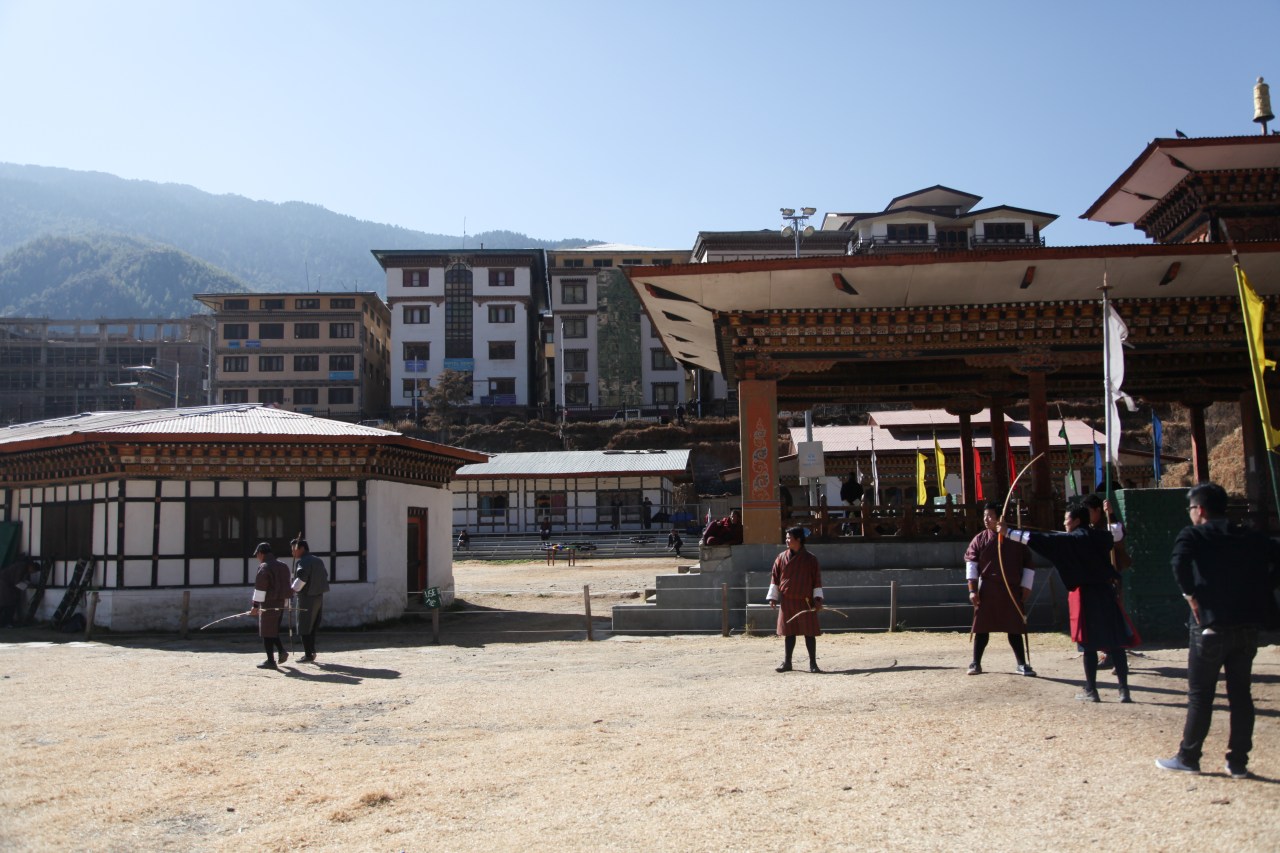
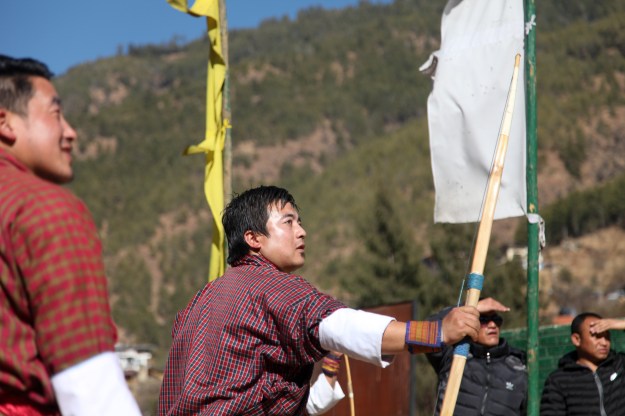
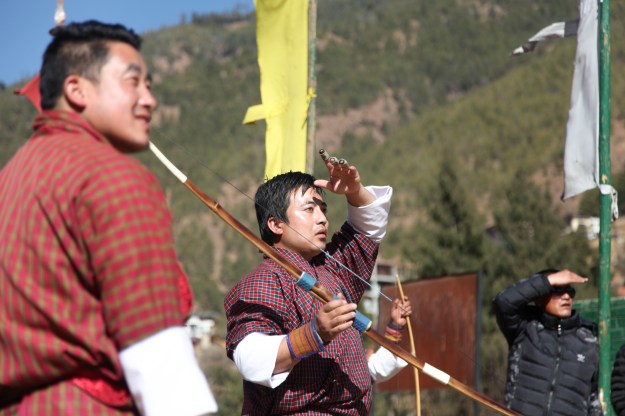
“I can’t even see the target,” I say to one of the archers. “How do you know if you hit it?”
He grins. “We know because of the sound.”
Thwack!
A cheer goes up. The entire team gathers in formation and faces the target to celebrate with a ritual song and dance.
There’s nothing genteel about Bhutanese archery. The archers heckle their opponents when they miss, whoop when their teammates hit the target, and drink from bottles of Druk 11000 lager stashed behind concrete barriers.
This doesn’t seem especially safe, but one thing I’ve already learned is that the Bhutanese are champion drinkers.
